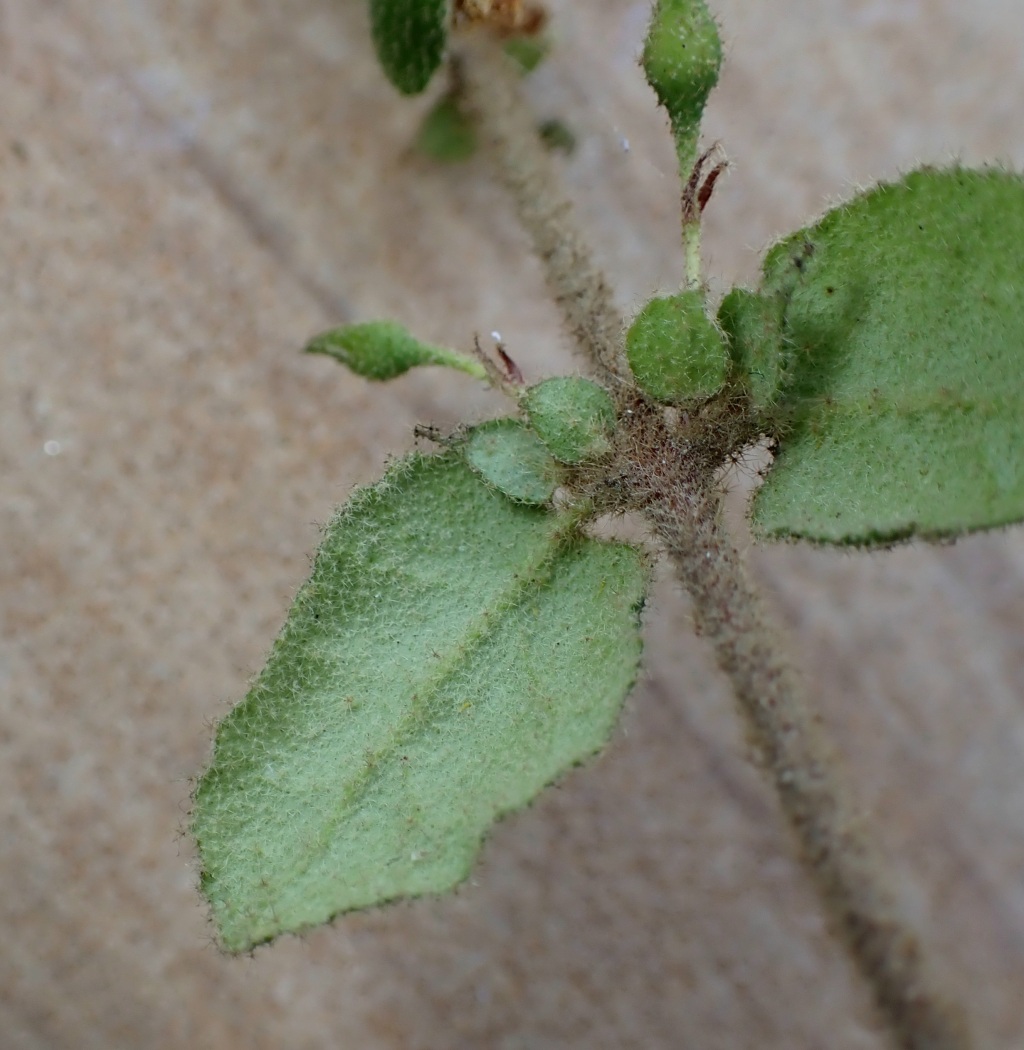Correa aemula
(Lindl.) F.Muell. Hairy CorreaErect to spreading shrub to 2.5 m high; branches sparsely to densely tomentose. Leaves papery, broadly subcordate, 1–6 cm long, 0.5–3.5 cm wide, apex acute to slightly rounded, surfaces sparsely to moderately stellate-pubescent; petiole 4–6 mm long. Flowers solitary or rarely 2 together, axillary or terminal to short shoots, pendent; pedicels 5–30 mm long; bracts small, medial to distal, persistent; calyx hemispherical to cup-shaped, with 4 prominent lanceolate lobes, 4–8 mm long, green, glabrous or sparsely stellate hairy; corolla cylindric, 15–30 mm long green or grey-green, darkening to mauve-purple with age, petals fused in bud but free after anthesis and then surrounding stamens; filaments subequal to corolla or slightly exserted. Flowers spring and summer.
Wim, GleP, VVP, GipP, Gold, CVU, GGr, DunT, EGU, HSF, HNF. Also SA. Occurring in western Victoria in the Grampians and nearby Pyrenees Ranges, where found along streams in woodland or on mountain tops.
Hybridizes with C. reflexa in the Grampians and on Mt Buangor.
Duretto, M.F. (1999). Rutaceae. In: Walsh, N.G.; Entwisle, T.J., Flora of Victoria Vol. 4, Cornaceae to Asteraceae, pp. 153–197. Inkata Press, Melbourne.
 Spinning
Spinning

